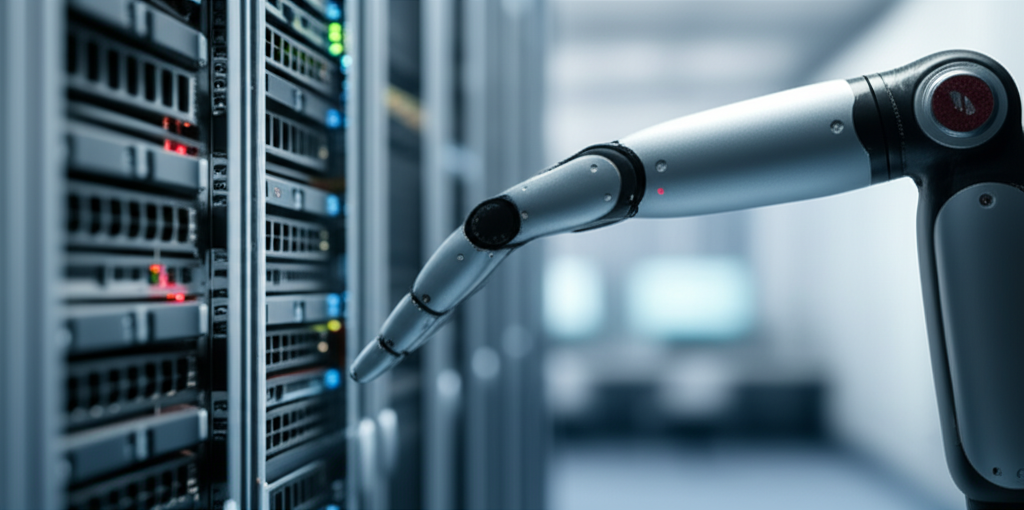
Meta Description: Discover how hyperautomation is revolutionizing industries. Explore its impact, future trends, and practical applications shaping the world in 2025 and beyond.
Understanding Hyperautomation: The Next Evolution
Hyperautomation is rapidly transforming how businesses operate. It represents more than just automating individual tasks; it’s about orchestrating multiple technologies, including robotic process automation (RPA), artificial intelligence (AI), machine learning (ML), and business process management (BPM), to automate end-to-end processes. The hyperautomation future promises a streamlined, efficient, and intelligent operational landscape.
Hyperautomation isn’t merely a buzzword. It’s a strategic approach that enables organizations to identify, vet, and automate as many business and IT processes as possible. This approach leads to significant gains in productivity, cost reduction, and improved customer experiences. Businesses are increasingly leveraging hyperautomation to stay competitive in a rapidly evolving market.
Key Components Driving Hyperautomation
Hyperautomation relies on a synergy of different technologies, each playing a crucial role in its success.
– Robotic Process Automation (RPA): Automates repetitive, rule-based tasks.
– Artificial Intelligence (AI): Enables systems to learn, adapt, and make decisions.
– Machine Learning (ML): Allows systems to improve performance over time without explicit programming.
– Business Process Management (BPM): Provides a framework for managing and optimizing business processes.
– Integration Platform as a Service (iPaaS): Connects various systems and applications, ensuring seamless data flow.
– Low-Code/No-Code Platforms: Empower citizen developers to create automated solutions without extensive coding knowledge.
These components work together to create a holistic automation ecosystem. By integrating these technologies, hyperautomation can tackle complex, unstructured tasks that traditional automation solutions can’t handle.
The Role of AI in Hyperautomation’s Future
AI is the brain behind hyperautomation. It enables automated systems to understand context, make intelligent decisions, and continuously improve. Machine learning algorithms analyze vast amounts of data to identify patterns, predict outcomes, and optimize processes.
Consider a customer service scenario. AI-powered chatbots can handle routine inquiries, while more complex issues are routed to human agents. The AI system learns from each interaction, becoming better at resolving issues over time. This blend of AI and automation improves customer satisfaction and reduces operational costs.
The Impact of Hyperautomation Across Industries
Hyperautomation is not limited to one sector; its influence spans across various industries, reshaping operations and creating new opportunities.
– Healthcare: Automating administrative tasks, improving patient care, and accelerating drug discovery.
– Finance: Streamlining compliance, detecting fraud, and enhancing customer service.
– Manufacturing: Optimizing production processes, improving quality control, and reducing downtime.
– Retail: Personalizing customer experiences, optimizing supply chains, and automating inventory management.
– Government: Improving efficiency, enhancing citizen services, and ensuring regulatory compliance.
For instance, in the financial sector, hyperautomation can streamline loan application processes, reducing approval times and improving accuracy. In healthcare, it can automate appointment scheduling, freeing up staff to focus on patient care. The possibilities are endless, and the benefits are substantial.
Preparing for the Hyperautomation Future: Strategies and Best Practices
To successfully implement hyperautomation, organizations need a clear strategy and a well-defined roadmap. Here are some best practices to consider:
– Start with a Comprehensive Assessment: Identify processes that are ripe for automation.
– Prioritize High-Impact Areas: Focus on automating tasks that will deliver the greatest value.
– Invest in the Right Technologies: Choose tools that align with your specific needs and goals.
– Foster a Culture of Innovation: Encourage employees to embrace automation and contribute ideas.
– Provide Training and Support: Ensure that employees have the skills and knowledge to use automated systems effectively.
– Monitor and Optimize: Continuously track performance and make adjustments as needed.
By following these strategies, businesses can maximize the benefits of hyperautomation and position themselves for success in the digital age. Understanding the hyperautomation future and planning accordingly is essential.
Overcoming Challenges in Hyperautomation Implementation
While the benefits of hyperautomation are clear, implementing it can be challenging. Organizations may face resistance to change, lack of technical expertise, and integration issues.
– Resistance to Change: Address concerns by communicating the benefits of automation and involving employees in the process.
– Lack of Technical Expertise: Invest in training programs or partner with experienced consultants.
– Integration Issues: Choose technologies that are compatible with your existing systems and ensure seamless data flow.
– Security Risks: Implement robust security measures to protect against cyber threats.
– Scalability Challenges: Design your automation solutions to scale as your business grows.
These challenges can be overcome with careful planning, strategic investments, and a commitment to continuous improvement. The potential rewards of a well-executed hyperautomation strategy far outweigh the risks.
Embracing the Future
Hyperautomation is not just a trend; it’s a fundamental shift in how businesses operate. As we move towards 2025 and beyond, organizations that embrace hyperautomation will gain a significant competitive advantage. By integrating RPA, AI, and other advanced technologies, businesses can streamline processes, reduce costs, and improve customer experiences. The hyperautomation future is one of efficiency, innovation, and growth. Preparing for this future requires a strategic approach, a willingness to experiment, and a commitment to continuous learning.
For more insights or collaboration opportunities, visit www.agentcircle.ai.






